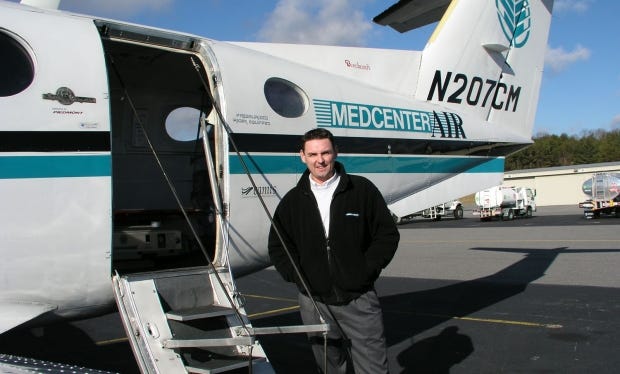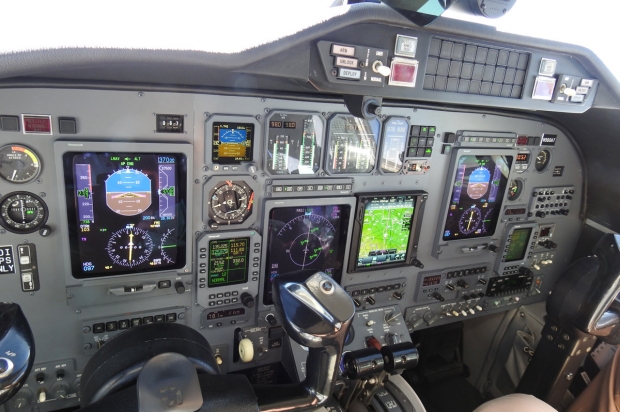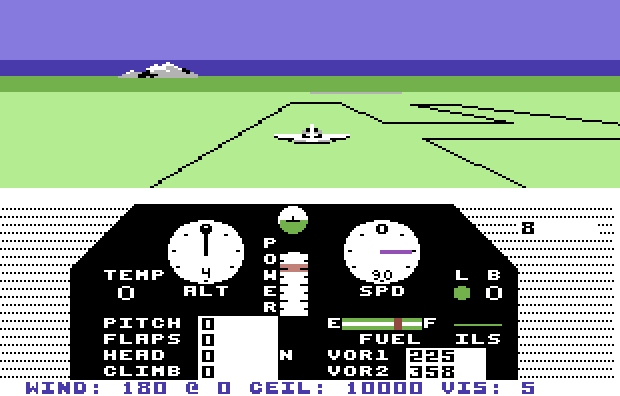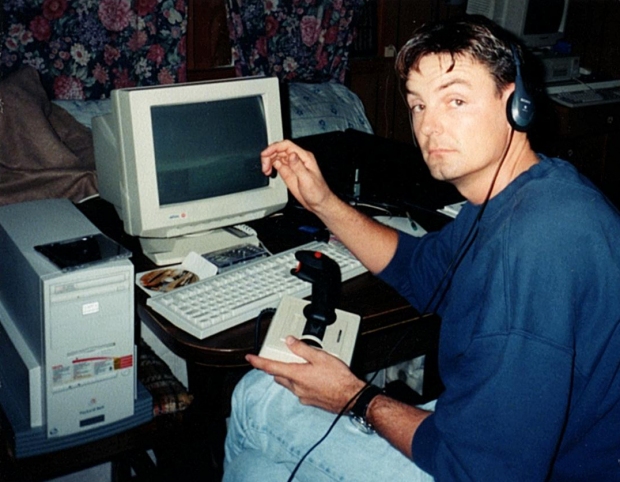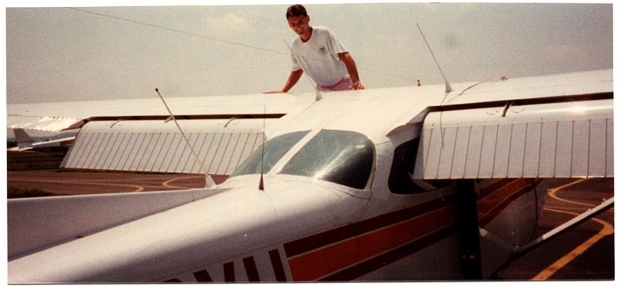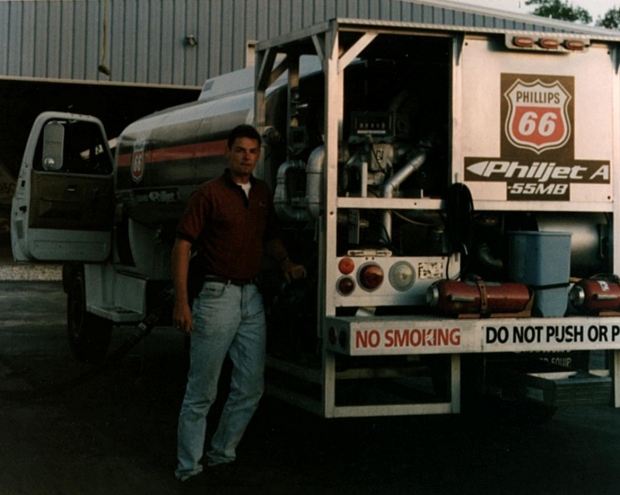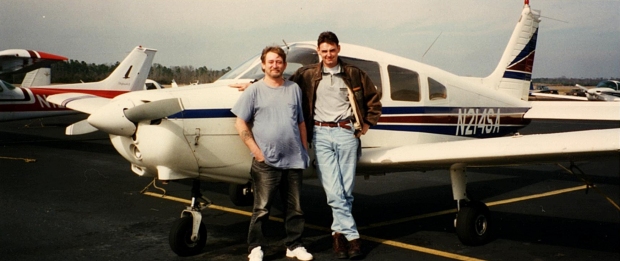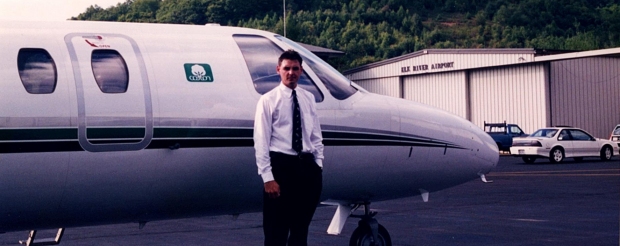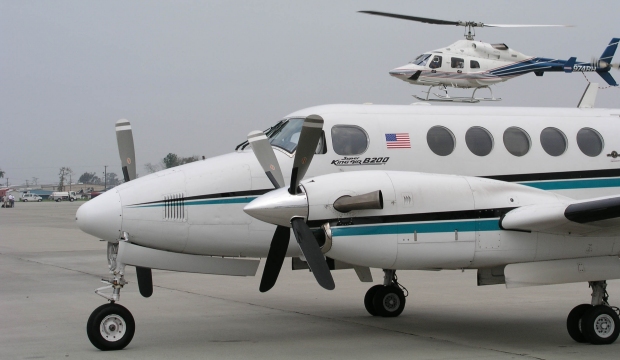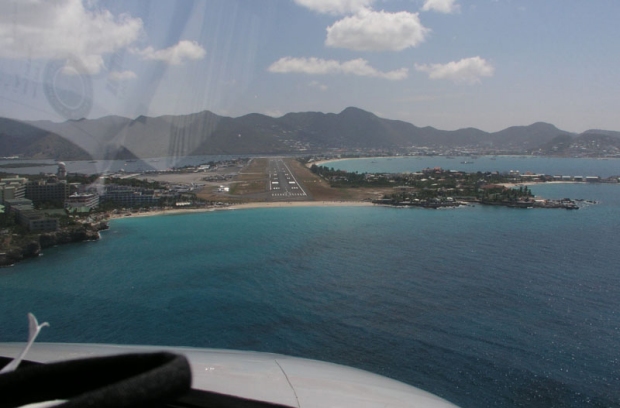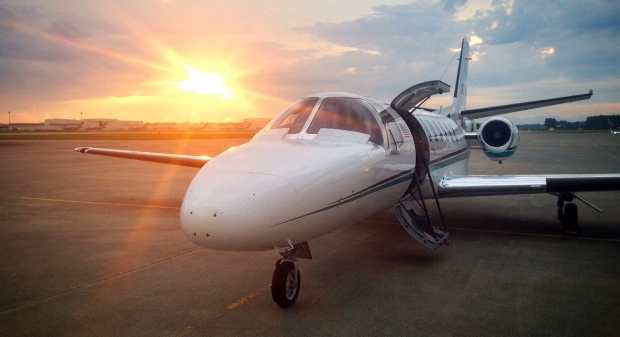The Flare Path: A Typical Atypical Simmer #1
Meet BeachAV8R
The idea that simulations are consolation prizes - digital sops for people that lack the skill or dedication to make it as real pilots, race car drivers, tankies or whatever - is depressingly widespread. The linked notion that sims are something you abandon once you get your hands on the 'real McCoy', crops up almost as often in games criticism and forum exchanges, and annoys me just as much. While it's certainly true that many of my brethren and sistren are aspirants who recreate in facsimiles because they can't recreate in originals, the hobby is dotted with individuals who use and see simulations quite differently. Over the coming weeks I'd like to introduce you to some of these fascinating individuals.
Today's typical atypical simmer is the man behind www.mudspike.com and a regular contributor to PC Pilot magazine. When Chris 'BeachAV8R' Frishmuth isn't turning out riveting articles like this one, he's earning a living as a professional pilot. Asked to explain his route into real aviation and the reason for his continued use of and belief in simulations, he responded thus:
“The short bio - I earned my private pilot certificate in 1992, but I like to think I started learning to fly way back in 1982, at age 11, when I would visit a friend who happened to have an IBM computer and Flight Simulator 1.0. Two years later, with my own Commodore 64 in front of me, I fully immersed myself in virtual flying with titles like subLogic's FSII, Solo Flight, ATP, Gunship, and F-15 Strike Eagle. My 300-baud modem tied up our phone line for hours on end and cost my parents a fortune. I had a spiral notebook where I would dutifully log my flights around the Chicago area in FSII (who else remembers those white squares around Kankakee?) (RIP Meigs Field).”
“Since my first Commodore 64, I've also been a participant in the hardware chase, buying each new X86 processor in sequence, purchasing my first 3D card by Canopie, eventually seeing the wonder of anti-aliasing on a Voodoo 5-5500, and the witnessing the continuous evolution to where we are today with insane graphics quality and virtual reality headsets.”
“My PC gaming was directly responsible for me choosing an aviation career path. While I had always been attracted to aircraft and space, the mental stimulation at that young age where aviation represented near boundless travel was very appealing. I can still remember riding the school bus each morning in the dark - our route would take us past Davison Army Airfield in Northern Virginia (KDAA) and I'd see the blue glow of the taxiway lights through the foggy windows of the bus and to me they represented adventure and excitement.”
“At age 20, with a private certificate earned at the flying club at Quantico Marine Corps Station in my wallet, I headed to famed Embry-Riddle Aeronautical University in Prescott, Arizona. I could not afford to fly there, so I earned my degree in a new program (Aerospace Studies) that catered to non-flight, aviation students. With that degree in hand I went to live with my brother in North Myrtle Beach, SC and started working on the flight line at Grand Strand Airport (KCRE) pumping gas and moving aircraft for up to eighteen hours a day. At the end of the pay period, it wouldn't be unusual for me to just sign the back of my paycheck and slide the check back across the counter to deposit in my flight lessons account."
"In the short order of a year or so I earned my instrument, commercial, multi-engine, CFI, and CFII ratings. I flight instructed, flew aerial tours, surveys, forestry, flew freight, scared myself plenty of times, and learned a lot."
"I was picked up a couple of years later by a corporate operator in Charlotte, NC flying King Airs and Citations, and spent a couple of years there before landing at my current job flying as an air ambulance pilot for MedCenter Air in Charlotte, NC. Flying King Airs and Citations, I've been with the company for 18 years and it is the best job I've ever had, and likely ever will have. I love the mission, love the company, love the equipment I fly, and love what I do for a living.”
“One would think that as I transitioned into real life flying, I would start to lose interest in PC flight simming - after all, how could chasing pixels around the screen compare with reality? I found that not to be the case however. I credit that, in no small part, to my continuing fascination with combat flight simulators put out by Jane's, MicroProse, Eagle Dynamics, and Razorworks. While I ascended the civil aviation ladder in real life, I would only be able to become a combat pilot in the virtual world due to my corrected vision - so I continued to fulfil that fantasy with flight simulation. Concurrently, I flew a lot of civil aviation PC simulators like Microsoft Flight Simulator and X-Plane because they allowed me to travel to places I hadn't been, practice instrument skills, and fly aircraft I could only dream about.”
“In my professional career, I've spent hundreds of hours now in professional Level C and Level D flight simulators at various training facilities across the United States. With pricetags in the millions of dollars, and training contracts coming in at over $10,000 annually, "real" simulation is a very pricey, but beneficial exercise. So I am always in a constant state of amazement at the fidelity and realism that is obtainable on our desktop PC simulations at just the smallest fraction of the cost of the real thing. Recently I finally bit the bullet and took delivery of an Oculus Rift and my jaw hit the top of my desk when presented with VR cockpits in DCS World and FlyInside's Prepar3D presentation. How far we've come in the last three decades is impressive.”
“At this point in my career, and for the foreseeable future, I feel that PC flight simulation will continue to be a large part of my aviation experience. PC sims give me an outlet to explore areas I cannot reach in my day-to-day job, whether it be flying a supersonic fighter in DCS World, or taking a Twin Otter into Lukla. The same PC flight sims experiences that attracted me to the aviation profession are the same experiences that keep me coming back.”
* * *
In other news...
Two big PC wargames broke cover this week. Strategic Command 3, an approachable turn-based interpretation of WW2 west of the Urals that I found solid if not entirely convincing when I previewed it a couple of months ago, was expected. Game-Labs' sequel to the turnless Ultimate General: Gettysburg came as a complete surprise.
Incomplete at present (the half-empty engagements folder should be full by the end of January) the £23/$30 Early Access Ultimate General: Civil War takes the exceptionally fluid battle mechanics of UGG to American Civil War battlefields far from Little Round Top and Cemetery Ridge. When finished the campaign will feature recreations of sixteen of the ACW's most costly and consequential scraps together with twenty-five smaller fictional skirmishes.
I spent several hours in UGCW's company yesterday, and can see myself spending many more in the weeks and months to come. While the game inherits some of the shortcomings of its predecessor – the unhelpful unit icons, occasionally hard-to-read terrain, and slight tendency towards tactical blandness are all familiar - improvements and enrichments are numerous.
Directing forces by daubing arrows directly onto the terrain has made way for a more conventional right-click system, but pleasing geo-grafitti hasn't been totally abandoned. Now you draw battle-lines rather than brigade routes. By group-selecting a crowd of units then scribing a thoughtful squiggle along a distant ridge or round a forest edge, a faraway landscape feature can be claimed and exploited with the minimum of fuss.
Other battle management boons include a new game speed selector switch (set it to 'slow' and the lack of an issue-orders-while-paused capability seems unimportant) and clickable map shields that send selected troops scurrying towards nearby fortifications and buildings. The death-dispensing armoured train in the first pic is a dash of developer's licence (The real Battle of Philippi was a relatively small loco-less scuffle). I suspect it won't gatecrash too many battles, unlike the new supply ammo-distributing supply wagons which, along with surrendered units heading for captivity, add welcome additional colour to martial mayhem.
The most unexpected and intriguing aspect of Ultimate General: Civil War is probably its generously applied campaign grout. As you move through the web of scripted scenarios every inter-mission intermission is an opportunity - assuming sufficient funds and manpower are available - to repair, reinforce, and reshape your core force. The resources at your disposal are partially determined by battle results. Seven personal skill stats (Politics, Economy, Medicine, Training, Army Organisation, Logistics, Reconnaissance) defined initially through some RPG-style background choices then slowly enhanced with victory-earned Career Points, also influence proceedings. Clearly Nick Thomadis and chums aren't quite ready to tackle a full-blown Total War-esque strat layer yet, but this compromise - scripted battles involving heavily personalised player armies - feels like a significant step towards that admirable objective.
* * *
